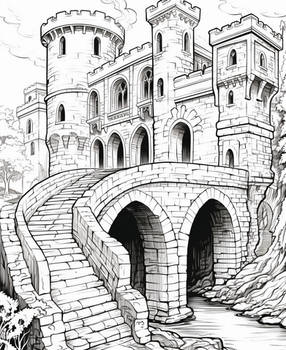ShopDreamUp AI ArtDreamUp
Deviation Actions

Full Access to All
Great way to support me! Full access to all previous and future exclusive content. All my galleries will add new images periodically, don't miss it!
$25/month
Suggested Deviants
Suggested Collections
You Might Like…
Description
The 1956 Grand Canyon mid-air collision occurred on Saturday, June 30, 1956 at 10:30 AM Pacific Standard Time when a United Airlines passenger airliner struck a Trans World Airlines (TWA) airliner over the Grand Canyon in Arizona, resulting in the crash of both planes and 128 fatalities. Until the 1960s it was the deadliest airline crash in history, and would lead to sweeping changes in the regulation of flight operations over the United States.
At about 10:30 AM the flight paths of the two aircraft intersected over the canyon and they collided at a closing angle of about 25 degrees. Post-crash analysis determined that the United DC-7 was banked to the right and pitched down at the time of the collision, suggesting that one or possibly both of the United pilots saw the TWA Constellation seconds before impact and that evasive action was attempted.
The DC-7's upraised left wing clipped the top of the Constellation's vertical stabilizer and struck the fuselage immediately ahead of the stabilizer's base, causing the empennage (tail section) to break away from the rest of the airframe. Simultaneously, the propeller on the DC-7's left outboard (number one) engine chopped a series of gashes into the bottom of the Constellation's fuselage. Explosive decompression would have instantly occurred from the combined damage, a theory that was substantiated by light debris (e.g., cabin furnishings and personal effects) being scattered over a large area.
The separation of the empennage from the Constellation resulted in an immediate loss of control and the aircraft went into a near-vertical terminal velocity dive. Plunging into the canyon at an estimated speed of more than 700 feet (213.4 metres) per second (475 mph), the plane crashed inverted on the northeast slope of Temple Butte and disintegrated on impact. An intense fire ensued. The severed empennage, battered but still in a recognizable form, came to rest nearby.
The DC-7's left wing outboard of the number one engine was mangled by the impact and was no longer capable of producing substantial lift. The engine itself had been fatally damaged as well, and the combined loss of lift and propulsion put the crippled aircraft into a rapidly descending left spiral from which no recovery was possible. The Mainliner slammed into the south wall of Chuar Butte and burned.
Artist's note -is a shitty coloring person ><
At about 10:30 AM the flight paths of the two aircraft intersected over the canyon and they collided at a closing angle of about 25 degrees. Post-crash analysis determined that the United DC-7 was banked to the right and pitched down at the time of the collision, suggesting that one or possibly both of the United pilots saw the TWA Constellation seconds before impact and that evasive action was attempted.
The DC-7's upraised left wing clipped the top of the Constellation's vertical stabilizer and struck the fuselage immediately ahead of the stabilizer's base, causing the empennage (tail section) to break away from the rest of the airframe. Simultaneously, the propeller on the DC-7's left outboard (number one) engine chopped a series of gashes into the bottom of the Constellation's fuselage. Explosive decompression would have instantly occurred from the combined damage, a theory that was substantiated by light debris (e.g., cabin furnishings and personal effects) being scattered over a large area.
The separation of the empennage from the Constellation resulted in an immediate loss of control and the aircraft went into a near-vertical terminal velocity dive. Plunging into the canyon at an estimated speed of more than 700 feet (213.4 metres) per second (475 mph), the plane crashed inverted on the northeast slope of Temple Butte and disintegrated on impact. An intense fire ensued. The severed empennage, battered but still in a recognizable form, came to rest nearby.
The DC-7's left wing outboard of the number one engine was mangled by the impact and was no longer capable of producing substantial lift. The engine itself had been fatally damaged as well, and the combined loss of lift and propulsion put the crippled aircraft into a rapidly descending left spiral from which no recovery was possible. The Mainliner slammed into the south wall of Chuar Butte and burned.
Artist's note -is a shitty coloring person ><
Image size
2520x1440px 2.64 MB
© 2012 - 2024 KirovRampager
Comments26
Join the community to add your comment. Already a deviant? Log In
I feel really bad for the people who died in the accident. I often looked at wreck chasing or aircraft archaeology websites and was intrigued by how much is actually still in the canyon. I know they removed most of the wreckage around 1971 and scrapped it on the Navajo Reservation (which the Navajo Nation was none too happy about), but they left some pretty big pieces of Constellation and DC-7 behind. Apparently, there's still a radial engine from the DC-7 down there, still recognizable by the power recovery turbines it carried.
Apologies for the big comment, this is just an incident that very much intrigues me.
Apologies for the big comment, this is just an incident that very much intrigues me.




![Pinelt the Avia B-33 [Ilyushin IL-10]](https://images-wixmp-ed30a86b8c4ca887773594c2.wixmp.com/f/33ddba33-e6f4-486f-a456-07246019f059/d5ge6w3-a9817919-efed-442a-97d2-751795bf7dc2.png/v1/crop/w_92,h_92,x_58,y_0,scl_0.095833333333333/pinelt_the_avia_b_33___ilyushin_il_10__by_kirovrampager_d5ge6w3-92s.png?token=eyJ0eXAiOiJKV1QiLCJhbGciOiJIUzI1NiJ9.eyJzdWIiOiJ1cm46YXBwOjdlMGQxODg5ODIyNjQzNzNhNWYwZDQxNWVhMGQyNmUwIiwiaXNzIjoidXJuOmFwcDo3ZTBkMTg4OTgyMjY0MzczYTVmMGQ0MTVlYTBkMjZlMCIsIm9iaiI6W1t7ImhlaWdodCI6Ijw9MjU4IiwicGF0aCI6IlwvZlwvMzNkZGJhMzMtZTZmNC00ODZmLWE0NTYtMDcyNDYwMTlmMDU5XC9kNWdlNnczLWE5ODE3OTE5LWVmZWQtNDQyYS05N2QyLTc1MTc5NWJmN2RjMi5wbmciLCJ3aWR0aCI6Ijw9OTAwIn1dXSwiYXVkIjpbInVybjpzZXJ2aWNlOmltYWdlLm9wZXJhdGlvbnMiXX0.zbQKBpVVzR_nLQSakEl3zRVk_6bOD1tlSVUc5YUn5Ls)




![Nakajima C6N Saiun [Myrt]](https://images-wixmp-ed30a86b8c4ca887773594c2.wixmp.com/f/33ddba33-e6f4-486f-a456-07246019f059/d5gabtf-0c718922-e25e-436d-b214-c1a4a7f2549b.png/v1/crop/w_92,h_92,x_51,y_0,scl_0.076666666666667/nakajima_c6n_saiun__myrt__by_kirovrampager_d5gabtf-92s.png?token=eyJ0eXAiOiJKV1QiLCJhbGciOiJIUzI1NiJ9.eyJzdWIiOiJ1cm46YXBwOjdlMGQxODg5ODIyNjQzNzNhNWYwZDQxNWVhMGQyNmUwIiwiaXNzIjoidXJuOmFwcDo3ZTBkMTg4OTgyMjY0MzczYTVmMGQ0MTVlYTBkMjZlMCIsIm9iaiI6W1t7ImhlaWdodCI6Ijw9MjgyIiwicGF0aCI6IlwvZlwvMzNkZGJhMzMtZTZmNC00ODZmLWE0NTYtMDcyNDYwMTlmMDU5XC9kNWdhYnRmLTBjNzE4OTIyLWUyNWUtNDM2ZC1iMjE0LWMxYTRhN2YyNTQ5Yi5wbmciLCJ3aWR0aCI6Ijw9OTAwIn1dXSwiYXVkIjpbInVybjpzZXJ2aWNlOmltYWdlLm9wZXJhdGlvbnMiXX0.Kv48cOwEPaBVrT5R37pZBXEwoMTLDMXdKKAYcC2M3XU)
























